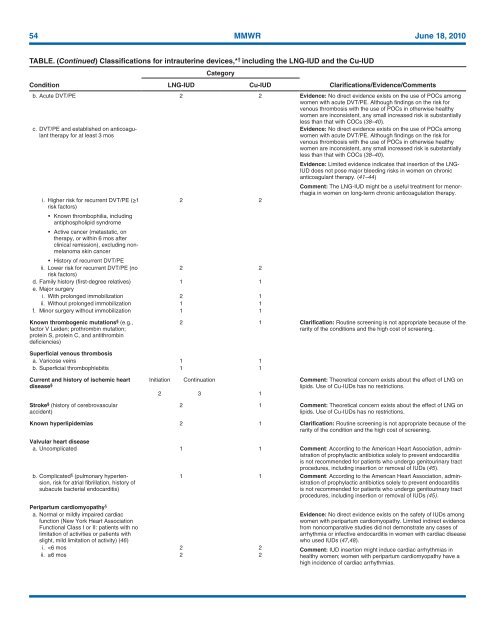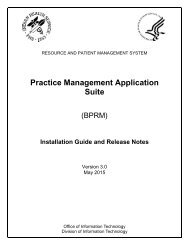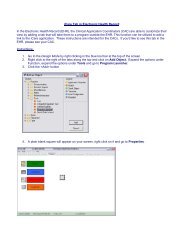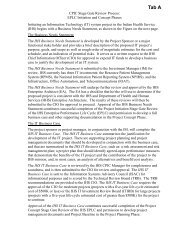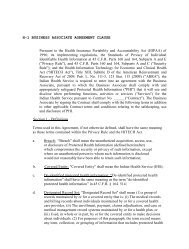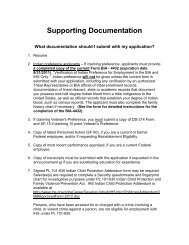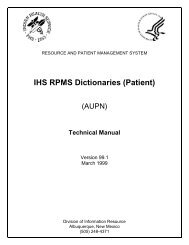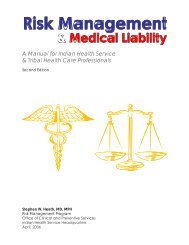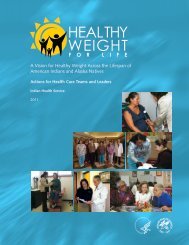CDC Article-US Medical Eligibility Criteria for Contraceptive Use, 2010
CDC Article-US Medical Eligibility Criteria for Contraceptive Use, 2010
CDC Article-US Medical Eligibility Criteria for Contraceptive Use, 2010
You also want an ePaper? Increase the reach of your titles
YUMPU automatically turns print PDFs into web optimized ePapers that Google loves.
54 MMWR June 18, <strong>2010</strong><br />
TABLE. (Continued) Classifications <strong>for</strong> intrauterine devices,* † including the LNG-IUD and the Cu-IUD<br />
Condition<br />
LNG-IUD<br />
Category<br />
Cu-IUD<br />
Clarifications/Evidence/Comments<br />
b. Acute DVT/PE 2 2 Evidence: No direct evidence exists on the use of POCs among<br />
women with acute DVT/PE. Although findings on the risk <strong>for</strong><br />
venous thrombosis with the use of POCs in otherwise healthy<br />
women are inconsistent, any small increased risk is substantially<br />
less than that with COCs (38–40).<br />
c. DVT/PE and established on anticoagulant<br />
therapy <strong>for</strong> at least 3 mos<br />
i. Higher risk <strong>for</strong> recurrent DVT/PE (≥1<br />
2 2<br />
risk factors)<br />
• Known thrombophilia, including<br />
antiphospholipid syndrome<br />
• Active cancer (metastatic, on<br />
therapy, or within 6 mos after<br />
clinical remission), excluding nonmelanoma<br />
skin cancer<br />
• History of recurrent DVT/PE<br />
ii. Lower risk <strong>for</strong> recurrent DVT/PE (no<br />
2 2<br />
risk factors)<br />
d. Family history (first-degree relatives) 1 1<br />
e. Major surgery<br />
i. With prolonged immobilization 2 1<br />
ii. Without prolonged immobilization 1 1<br />
f. Minor surgery without immobilization 1 1<br />
Evidence: No direct evidence exists on the use of POCs among<br />
women with acute DVT/PE. Although findings on the risk <strong>for</strong><br />
venous thrombosis with the use of POCs in otherwise healthy<br />
women are inconsistent, any small increased risk is substantially<br />
less than that with COCs (38–40).<br />
Evidence: Limited evidence indicates that insertion of the LNG-<br />
IUD does not pose major bleeding risks in women on chronic<br />
anticoagulant therapy. (41–44)<br />
Comment: The LNG-IUD might be a useful treatment <strong>for</strong> menorrhagia<br />
in women on long-term chronic anticoagulation therapy.<br />
Known thrombogenic mutations § (e.g.,<br />
factor V Leiden; prothrombin mutation;<br />
protein S, protein C, and antithrombin<br />
deficiencies)<br />
2 1 Clarification: Routine screening is not appropriate because of the<br />
rarity of the conditions and the high cost of screening.<br />
Superficial venous thrombosis<br />
a. Varicose veins 1 1<br />
b. Superficial thrombophlebitis 1 1<br />
Current and history of ischemic heart<br />
disease § Initiation Continuation Comment: Theoretical concern exists about the effect of LNG on<br />
lipids. <strong>Use</strong> of Cu-IUDs has no restrictions.<br />
2 3 1<br />
Stroke § (history of cerebrovascular<br />
accident)<br />
2 1 Comment: Theoretical concern exists about the effect of LNG on<br />
lipids. <strong>Use</strong> of Cu-IUDs has no restrictions.<br />
Known hyperlipidemias 2 1 Clarification: Routine screening is not appropriate because of the<br />
rarity of the condition and the high cost of screening.<br />
Valvular heart disease<br />
a. Uncomplicated 1 1 Comment: According to the American Heart Association, administration<br />
of prophylactic antibiotics solely to prevent endocarditis<br />
is not recommended <strong>for</strong> patients who undergo genitourinary tract<br />
procedures, including insertion or removal of IUDs (45).<br />
b. Complicated § (pulmonary hypertension,<br />
risk <strong>for</strong> atrial fibrillation, history of<br />
subacute bacterial endocarditis)<br />
1 1 Comment: According to the American Heart Association, administration<br />
of prophylactic antibiotics solely to prevent endocarditis<br />
is not recommended <strong>for</strong> patients who undergo genitourinary tract<br />
procedures, including insertion or removal of IUDs (45).<br />
Peripartum cardiomyopathy §<br />
a. Normal or mildly impaired cardiac<br />
function (New York Heart Association<br />
Functional Class I or II: patients with no<br />
limitation of activities or patients with<br />
slight, mild limitation of activity) (46)<br />
i.


